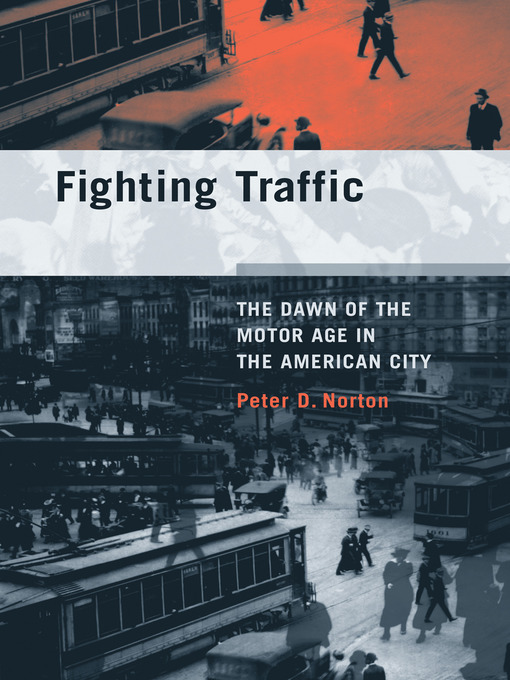Before the advent of the automobile, users of city streets were diverse and included children at play and pedestrians at large. By 1930, most streets were primarily a motor thoroughfares where children did not belong and where pedestrians were condemned as “jaywalkers.” In Fighting Traffic, Peter Norton argues that to accommodate automobiles, the American city required not only a physical change but also a social one: before the city could be reconstructed for the sake of motorists, its streets had to be socially reconstructed as places where motorists belonged. It was not an evolution, he writes, but a bloody and sometimes violent revolution. Norton describes how street users struggled to define and redefine what streets were for. He examines developments in the crucial transitional years from the 1910s to the 1930s, uncovering a broad anti-automobile campaign that reviled motorists as “road hogs” or “speed demons” and cars as “juggernauts” or “death cars.” He considers the perspectives of all users—pedestrians, police (who had to become “traffic cops”), street railways, downtown businesses, traffic engineers (who often saw cars as the problem, not the solution), and automobile promoters. He finds that pedestrians and parents campaigned in moral terms, fighting for “justice.” Cities and downtown businesses tried to regulate traffic in the name of “efficiency.” Automotive interest groups, meanwhile, legitimized their claim to the streets by invoking “freedom”—a rhetorical stance of particular power in the United States. Fighting Traffic offers a new look at both the origins of the automotive city in America and how social groups shape technological change.
- New eBook additions
- Available now
- New kids additions
- New teen additions
- Most popular
- Try something different
- New Fiction eBooks
- Repair Center
- Comics & Graphic Novels
- Memphis Grit and Grind Collection
- Personal Finance Center
- Small Business Center
- Health Information Center
- See all ebooks collections
- New audiobook additions
- Available now
- New kids additions
- New teen additions
- Most popular
- Try something different
- See all audiobooks collections
- Generously donated by the Goodwyn Institute
- Generously donated by Ron and Jan Coleman
- Generously donated by Diana Duncan
- See all donated titles collections
- Popular Magazines
- Just Added
- Celebrity and Lifestyle
- Cooking & Food
- News & Politics
- Health & Fitness
- Home & Garden
- Family and Parenting
- Crafting
- Travel and Outdoor
- Science
- Tech and Gaming
- Art and Architecture
- See all magazines collections
